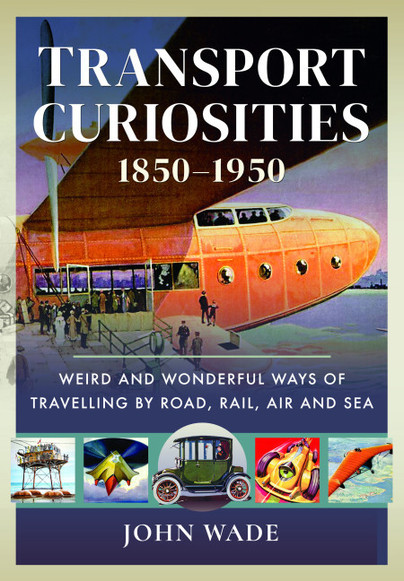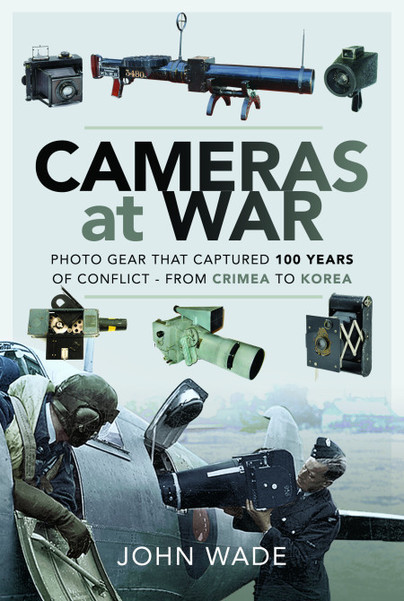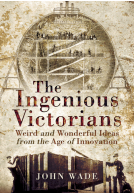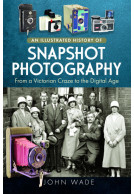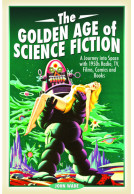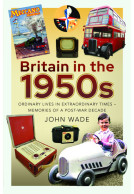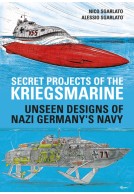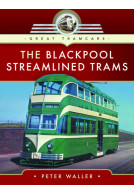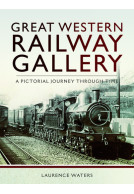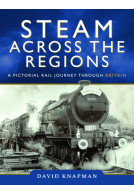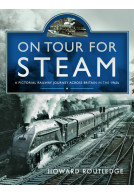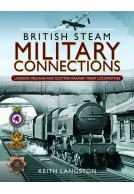Transport Curiosities, 1850–1950 (Hardback)
Weird and Wonderful Ways of Travelling by Road, Rail, Air and Sea
Imprint: Pen & Sword Transport
Pages: 208
Illustrations: 230 black & white illustrations
ISBN: 9781399003971
Published: 14th March 2022
(click here for international delivery rates)
Order within the next 6 hours, 4 minutes to get your order processed the next working day!
Need a currency converter? Check XE.com for live rates
Over the years many weird and wonderful types of transport have come and gone, some of which succeeded against all odds, others that spectacularly failed, and some that never got beyond a designer’s drawing board. Railway engines driven by horses, for example. Or maybe the surprising number of cars, boats and trains driven by aeroplane propellers. In this book you will find cars that flew, cars that floated on water and boats that ran on roads; steam-powered aeroplanes, electric submarines, railways driven by pneumatic air, aircraft with flapping wings… and a whole lot more. If you are a person who would like to have flown in an airship, or travelled in a train whose carriage sat on stilts above the sea with its tracks below the water, or dreamed of riding on a London to New York railway that took twelve days to travel the long way around the world, or maybe just fancied fixing your bicycle to a railway track, then this book is for you.
In this lively volume, the author takes us on a trip through a century of highly innovative and unusual inventions, some of which were actually built, although many have been consigned to the dustbin of history as great ‘might-have-beens’. Virtually every page is lavishly illustrated with diagrams, contemporary engravings and photographs.
Bradford Railway Circle
This book is clearly the result of exhaustive research and comes with an interesting introduction, a list of picture credits and a useful index. Owing to its highly varied subject matter, the work is ideal for dipping into at odd moments. However, the chapters are written in a highly readable narrative style and your reviewer soon proceeded to read it from cover to cover. This volume deserves a place on the bookshelf of anyone interested in the development of transport in all its forms and also of the connoisseur of the historic and the bizarre.
As featured by
The Broad Gauge Society
The cover gives a good insight to what is within its pages.
For the Love of Books
The graphics really help understand how inventive people can be from propeller driven trains, using
hydraulics and vacuum pumps for propulsion and monorails using different propulsion methods.
There is a great piece around the idea of a single railway line between London and New York that would take 12 days to complete, as well as other ideas that eventually worked and can be seen in New York, Chicago and other American cities (you need to read the book to find out what it was).
It was interesting to see that electric cars and buses are not new ideas (they just go further now), and bicycles that look more like torture
devices than transportation, and planes that question physics.
It’s a great read and one you will not be able to put down once you pick it up.
'Educational'.
SAHB Times Issue 111, Winter 2022-2023 (published by the Society of Automotive Historians in Britain)
There is generous automotive content, some of which will be new even to seasoned historians.
Many of us, I know, have wider interests in transport history outside the world of cars and motorcycles. If that is the case, then this offering from Pen & Sword may well interest you. Subtitled Weird and Wonderful Ways of Travelling by Road, Rail, Air and Sea this book explores a range of strange and bizarre inventions that made brief appearances in the hundred years being examined.
National Motor Museum Trust
From airships and atmospheric railways to electric submarines and flying cars, all manner of transport dead ends are examined. A few, like the Dyamaxion and the Dynasphere, may be familiar to some of us but I certainly wasn’t previously aware of the 1930s automated road vehicle steering system that was, quite literally, ‘done with mirrors’. This is not the only example of an idea that was ahead of its time that may yet, with modern technology, be realised. A great stocking filler for any transport enthusiast.
Every so often a book comes along that is different from the norm and might not be picked up by the average reader of this magazine, but which merits a look – Transport Curiosities is just such an example.
Engineering in Miniature - August 2022
The premise is simple, the author has taken the four major methods of propelled travel – by track, land, over and under water and by air, and looked for the more unusual examples of machinery produced to meet the needs of travellers. He’s certainly found plenty to write about.
What really makes the book, however, are the illustrations – they are plentiful, and almost entirely consist of contemporary engraving-type images which are very finely detailed and a pleasure to look at. This is an unusual title but we feel many will enjoy reading it.
"Fun, fascinating and full of images."
Family Tree Magazine, June 2022
Motorised transport innovation has always been populated with fantasising eccentrics. Over the years, they have devised electric submarines, flying cars, a motorcycle sidecar that doubled as a canoe, and aeroplanes that resembled jellyfish and tea trays. None of these got past the drawing board, but the atmospheric railway did, and it seems odd now that Isambard Kingdom Brunel gained sanction from the GWR board to convert 20 miles of route between Exeter and Newton Abbot
Steam World, June 2022
with leather pipes to power four 70mph trains and make steam redundant as early as 1846. It was a failure of course after
only two years because the seals on its leather pipes perished in the sea air and rats enjoyed a free lunch. Steam was back. John Wade has trawled the archives of Popular Mechanics magazine between 1904-30 to bring together some of the
most hair-brained projects and failures on rail, road, sea and air, which are each given brief coverage and hand-drawn sketches to show what they might have looked like. The story starts in fact in 1690, when mathematician, astronomer and theologian Sir Isaac Newton designed a weird steam locomotive that was never built. Sadly, there is no indication how it worked. If you enjoy pure whimsy, and are looking for an undemanding read, this is a quite entertaining diversion from conventional transport history titles.
"It’s an entertaining book, and you wonder what ideas of today will be looked at in the same way in the future."
PSV Circle (Buses) - May 2022, No 988
"A book of remarkable breadth."
York Model Engineers Newsletter - May 2022
This book is like a collection of ideas from British eccentrics, some of the designs in this book could fit into four categories as they were just not practical, didn’t get the financial support, physically impossible and just bizarre. In a way, all the designs shown were fantastic in their own ways and some were just out there. I must admit some of the bizarre inventions were my favourites but just impossible to work or be mass-produced. I found this book fascinating and I think the beautiful drawings and designs really make the book as it made every design seem cool but the book has that cool 50’s feel to it. As I said at the beginning this book looks like a collection of eccentric designs produced in the shed of a mad engineer. I really enjoyed this book and would happily recommend it for a good read.
The History Fella
Read the full review here
This is an entertaining review of the imagination of inventors. Whether you have an interest in transport, engineering invention, or just the quirky and unusual, this is indeed a curious gem of a book.
Michael's Model Railways
Read the full review here
I think this is a highly unusual subject nevertheless, as the title suggests, curious. The book starts with an introduction explaining to the reader that through the years, as per the title, describes many surreal transport inventions and thoughts from inventors of trains to cars to aeroplanes some of it even coming to fruition. The book is divided into the aforementioned introduction, thence 4 parts each consisting of 3 or 4 chapters with a final index. In part 1 ‘Travel on Tracks’ lists the many types of railway engines whether they be horse-drawn, electric or even pedal power! Part 2 ‘Travel by Land’ talks about electric cars, pedal cars and other unusual, powered vehicles. Part 3 ‘Travel Over and Under Water’ lets us into the different ships, Submarines boats and other nautical oddities whilst Part 4 ‘Travel by air’ speaks for itself. The book is indeed one out of the ordinary covering the early days of how the designers envisaged the various forms of transport up until 1950 when they had achieved how to float, fly and drive and from thence on improved on what they already had. A ‘must read’ in my view.
Andrew Thomson, IPMS Keighley
As featured in
The Bookseller
Covering all aspects of transport it’s a nice book and I would recommend it. Good for all ages
James Simmonds
About John Wade
John Wade is a freelance writer and photographer, with more than forty years’ experience in both fields. He has written, illustrated, edited and contributed to more than thirty books, plus numerous magazine articles, for book and magazine publishers in the UK, US and Australia. His specialities are social history as well as photographic history and techniques. His most recent books include Transport Curiosities (Pen & Sword, 2022), Cameras at War (Pen & Sword, 2020); The Golden Age of Science Fiction (Pen & Sword, 2019), London Curiosities (Pen & Sword, 2017), and The Ingenious Victorians (Pen & Sword, 2016).
Cameras at War Photo Gear that Captured 100 Years of Conflict – From Crimea to Korea (Paperback)
Books about war and the pictures that came out of conflict usually concentrate on the picture content. But behind every picture there is a camera – and that’s what this book is about. Profusely illustrated throughout with pictures of the cameras, rather than the pictures they took, it looks at 100 years of conflict from the Crimean War to the Korean War. It begins in the days when a photographer needed to be more of a scientist than an artist, such were the difficulties of shooting and processing any photograph. It ends with the cameras whose compact dimensions, versatility and ease of use…
By John WadeClick here to buy both titles for £38.99







